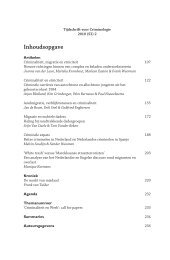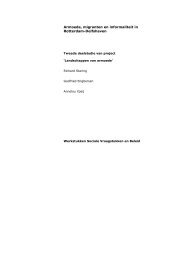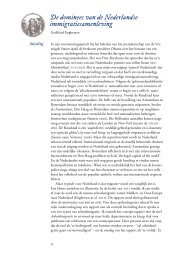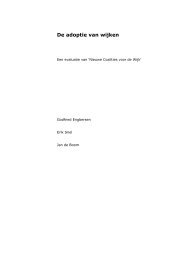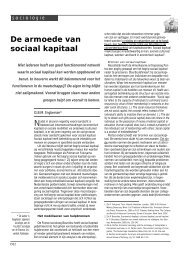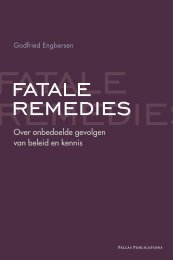THE SOCIAL CONSTRUCTION OF ILLEGALITY AND CRIMINALITY ...
THE SOCIAL CONSTRUCTION OF ILLEGALITY AND CRIMINALITY ...
THE SOCIAL CONSTRUCTION OF ILLEGALITY AND CRIMINALITY ...
You also want an ePaper? Increase the reach of your titles
YUMPU automatically turns print PDFs into web optimized ePapers that Google loves.
8<br />
GODFRIED ENGBERSEN <strong>AND</strong> JOANNE VAN DER LEUN<br />
TABLE II<br />
Reasons for arrest, all apprehensions (N = 328).<br />
Reason for arrest %<br />
Illegal residence/ labour 47<br />
Misdemeanours 13<br />
Minor offences 26<br />
Serious offences 5<br />
Drug related offences 9<br />
Source: Police data 1989–1994.<br />
The analysis of police files first of all demonstrated that most illegal<br />
immigrants are not apprehended for criminal activities. When we limit ourselves<br />
to the most recent reason for arrest (see Table II), nearly half of the<br />
registered illegal immigrants in Rotterdam were apprehended for illegal<br />
residence (47%) and an additional 13% for misdemeanours such as illegal<br />
labour or fare dodging. Furthermore, 26% were apprehended for minor<br />
offences such as shoplifting and car burglary, 5% for serious offences (robbery,<br />
murder, and possession of firearms), and 9% for offences against the<br />
Opium Act. Taking into account that criminal activities significantly enhance<br />
the risk of getting caught by the police, these figures indicate that<br />
the majority of illegal immigrants do not resort to criminal activities.<br />
The high proportion of arrests for illegal residence (almost half of the<br />
cases) is as such paradoxical when you take into account that the police<br />
are not actively tracking down illegal residents. A more detailed look at<br />
the files (see Table III) reveals that this concerns people who are arrested<br />
during spot checks in the workplace or during general checks, as in public<br />
transport. Others were apprehended during checks that were directed at<br />
other people (they just happened to be around) or because of rather vague<br />
reasons such as ‘displaying suspicious behaviour’. A closer look at the<br />
reasons for apprehension reveals that drug-related offences and different<br />
categories of theft prevail. Traffic offences, which constitute one of the<br />
main reasons for apprehending legal residents, are negligible in the case<br />
of illegal immigrants.<br />
Secondly, when we limit ourselves to arrests for criminal offences, we<br />
can draw a comparison between the arrests of illegal immigrants and those<br />
of legally residing suspects (see Table IV). This comparison makes clear<br />
that, across the board, illegal immigrants are less involved in crime than a<br />
comparable group of legal residents. This is not the case with drug-related<br />
crimes, on which illegal immigrants score evidently higher.



